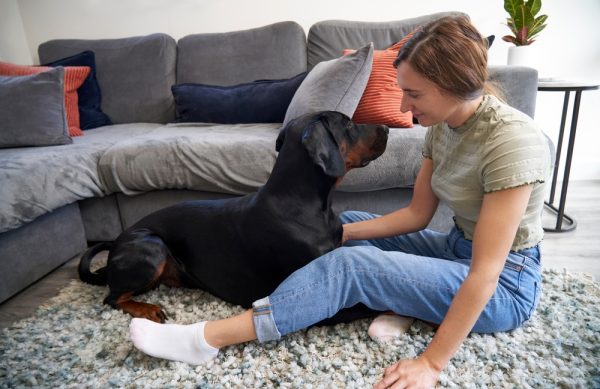
While it is true that breeds like Labradors, Collies, and German Shepherds are known for being easier to train than the likes of Huskies, Malamutes, and Doodles, any dog can be trained with the right handler and the right approach.
Below are the best puppy training books to help take you on the journey from novice puppy owner to experienced dog handler.
In this article

A Quick Comparison of Our Favorites in 2026
| Rating | Image | Product | Details | |
|---|---|---|---|---|
| Best Overall |
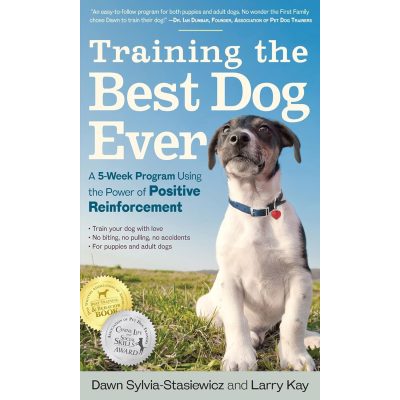
|
Training the Best Dog Ever |
|
Check Price |
| Best Value |
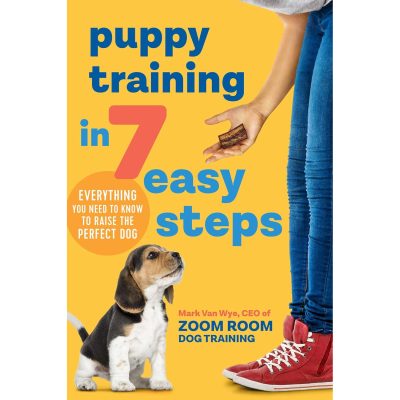
|
Puppy Training in 7 Easy Steps |
|
Check Price |
| Premium Choice |

|
Perfect Puppy in 7 Days |
|
Check Price |
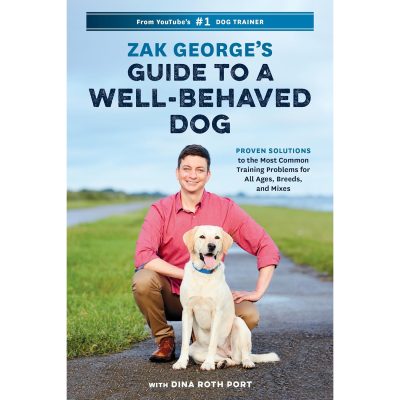
|
Zak George’s Guide to a Well-Behaved Dog |
|
Check Price | |
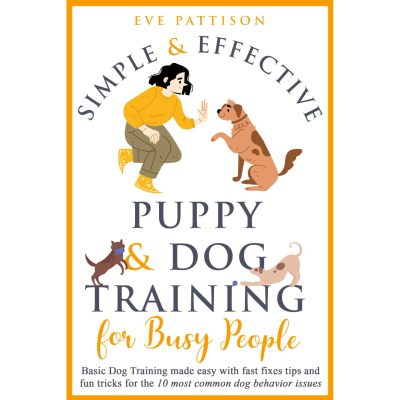
|
Simple and Effective Puppy and Dog Training for Busy People |
|
Check Price |
The 10 Best Puppy Training Books
1. Training the Best Dog Ever– Best Overall
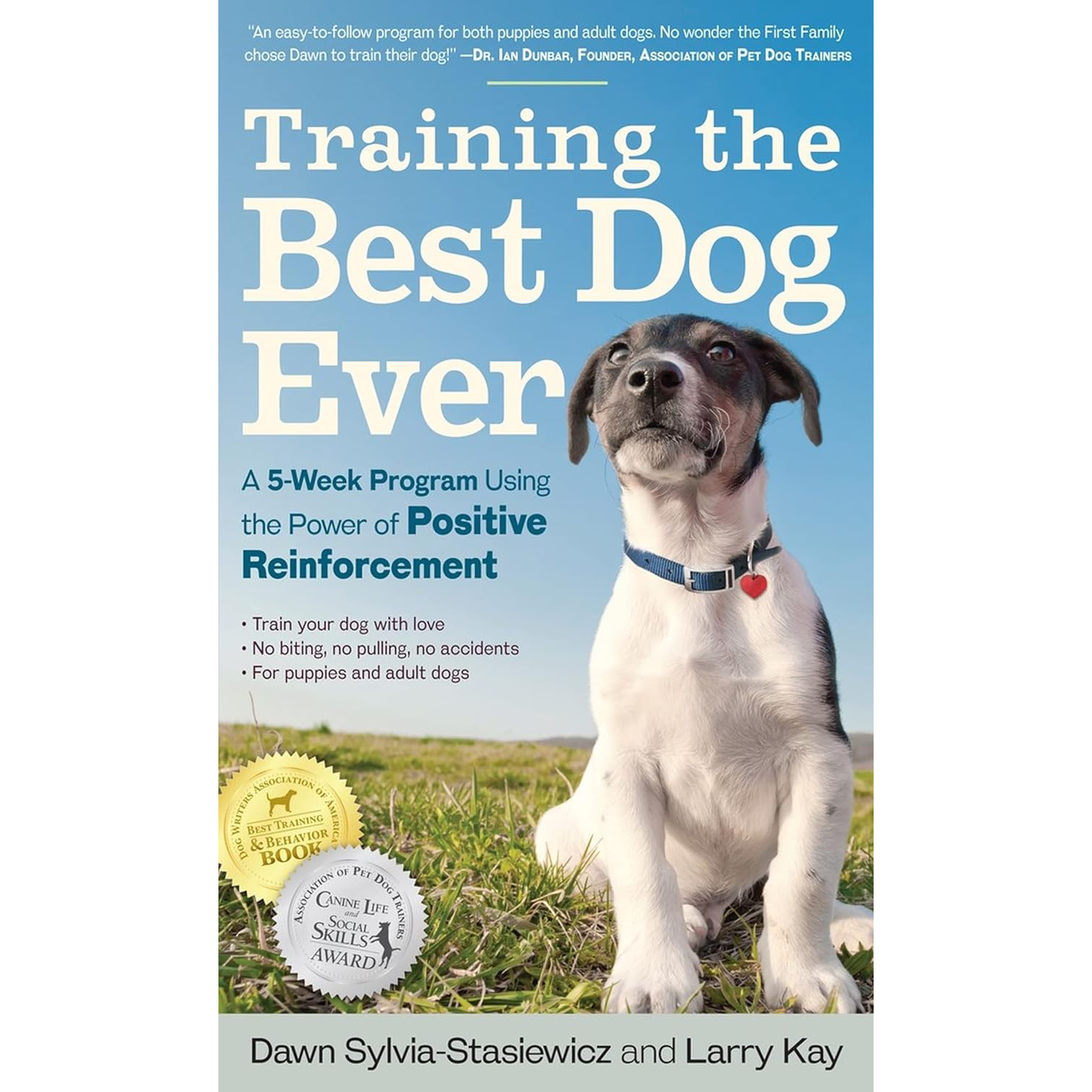
| Format: | Paperback |
| Pages: | 304 |
| Author: | Larry Kay |
It is good to have structure in training. Not only does it set your puppy up so they are used to having a schedule and are prepared for training sessions, but it also gets you in the habit of training every day and continuing with your training efforts on an ongoing basis.
Training The Best Dog Ever includes a structured 5-week training program that uses positive reinforcement training techniques. The book claims that practice only takes up to 20 minutes a day and it replaces the use of choke chains with treats and relies on bonding rather than reprimanding.
Commands and habits that are trained include basic commands like “sit” and “stay,” as well as general crate training, potty training, and hand feeding. You will also find advice on how to deal with some of the common problems that puppy and dog owners face—jumping, barking, and more.
Training The Best Dog Ever is over 300 pages long, uses first-hand experience for reference, and is the best overall puppy training book thanks to its structured approach and good general training techniques. But while it does address some common problems, it doesn’t, and arguably couldn’t, deal with all eventualities. It is also a little expensive compared to some alternatives.
- 5-week structured program to teach the basics
- Covers some problem behaviors and how to combat them
- Uses first-hand examples as guidance
- A little expensive
2. Puppy Training in 7 Easy Steps – Best Value
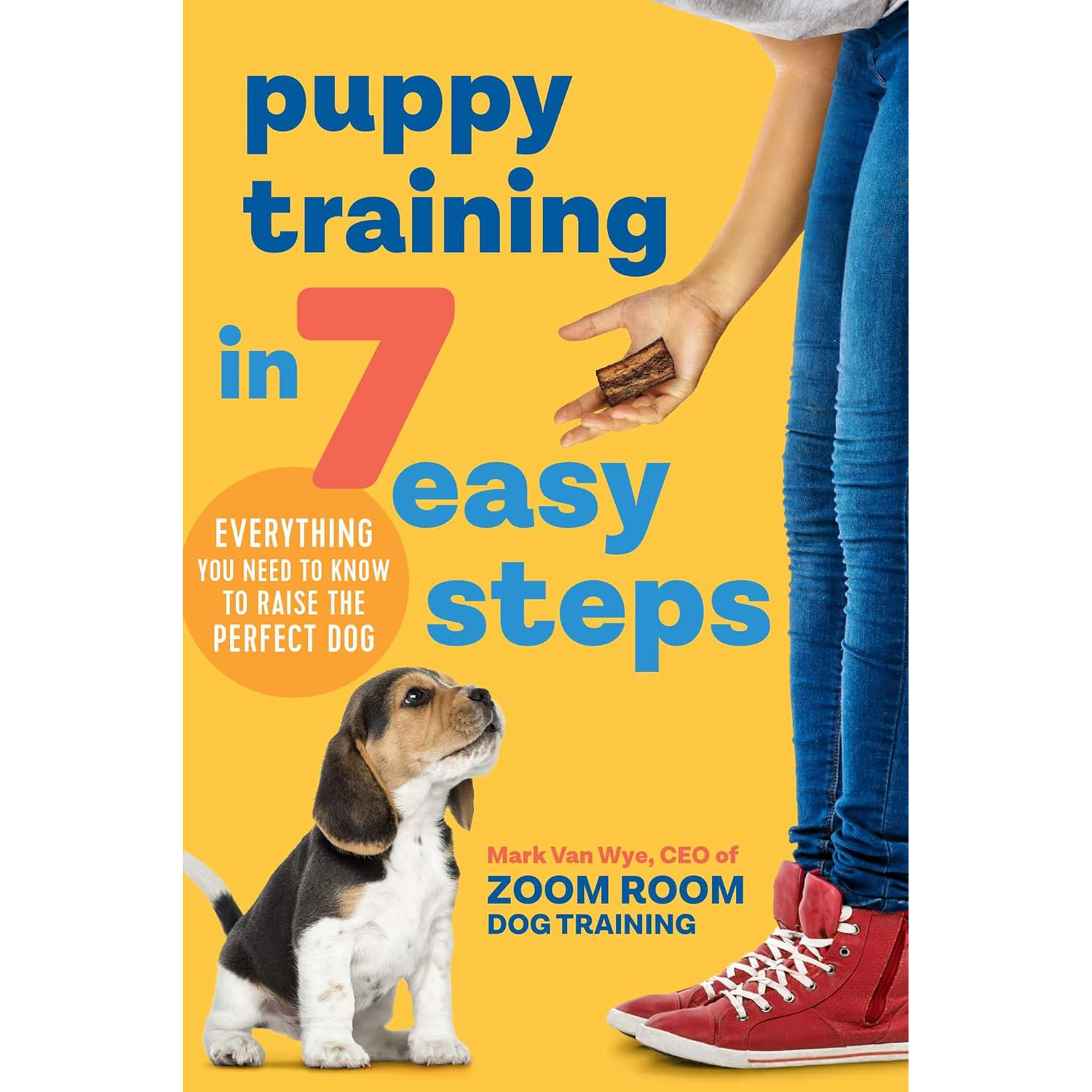
| Format: | Paperback |
| Pages: | 178 |
| Author: | Mark Van Wye |
Preparation is key to the early days of training. This not only means getting treats ready for reward-based training, but it also means having everything you need before you even get your new pup home. And that’s one area where Puppy Training in 7 Easy Steps really stands out—it advises you on what equipment and accessories to have ready. It even includes a home checklist, so you can be sure that your new dog won’t be put in any danger in its new abode and that it has everything it requires.
The paperback version of the book is inexpensive and, as well as preparing you for puppy ownership, it also handles the basics of training your new pet. It includes crate training, potty training, and leash walking, while also incorporating some basic command training. It is a good starting point which, combined with its low price, makes it the best puppy training book for the money.
However, the information included in Puppy Training in 7 Easy Steps is somewhat basic, and while it does include a troubleshooting section, you will likely need to invest in professional training or the acquisition of more help books if you have problems with any specific aspects of dog behavior.
- Inexpensive for the amount of information
- Good checklist and preparation guide for bringing home a puppy
- Includes advice on crate and potty training, as well as basic commands
- Information is fairly basic
3. Perfect Puppy in 7 Days – Premium Choice
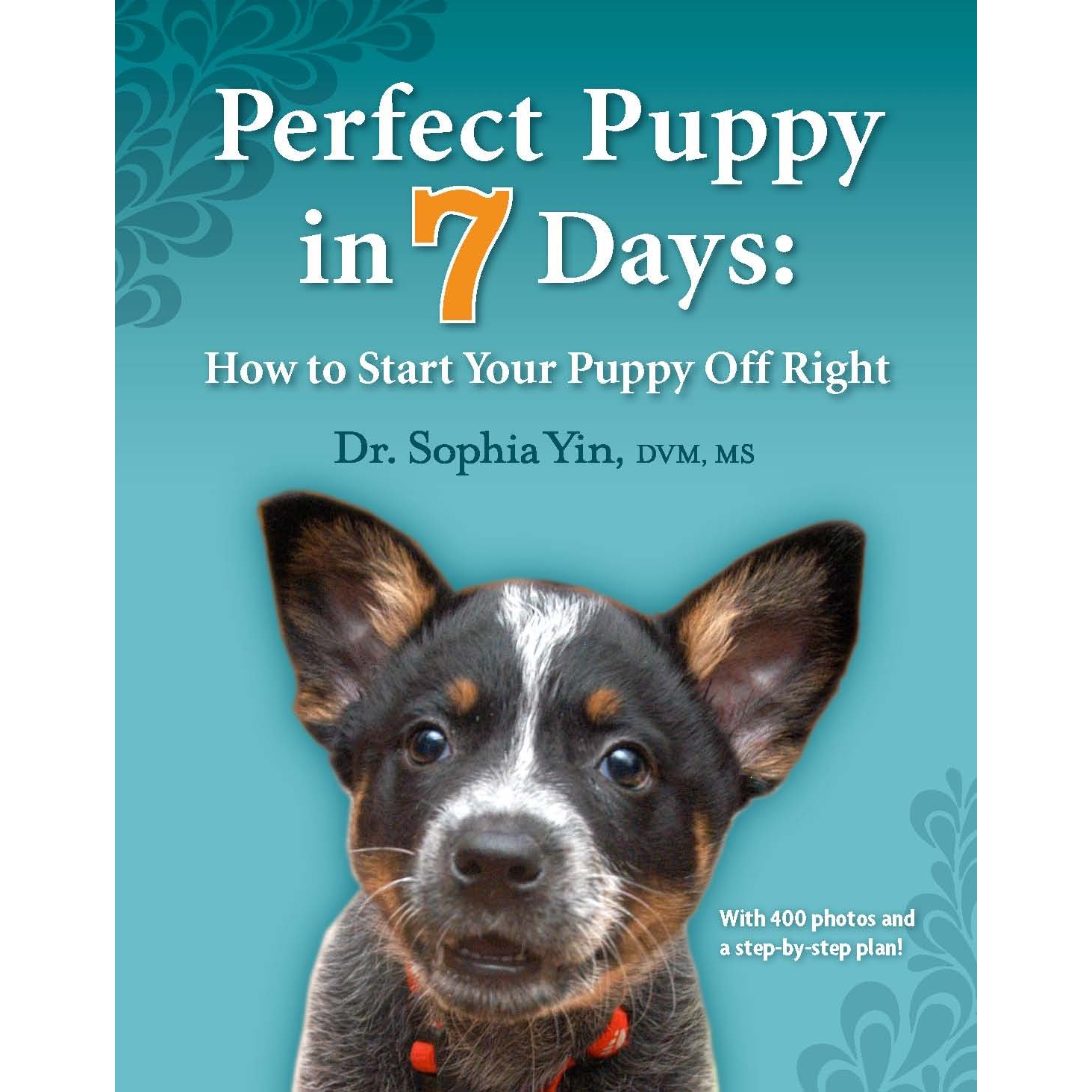
| Format: | Paperback |
| Pages: | 176 |
| Author: | Sophia Yin |
Dog training is an ongoing habit that you and your dog will need to follow throughout your pup’s life. As well as teaching basic commands and spending an allotted amount of time every day practicing a basic training program, you should utilize these skills in everyday life.
Perfect Puppy in 7 Days does teach some basic commands and offers advice on aspects of dog ownership, like leash walking and crate training, but it also teaches some of the basic behavior modifications that will set you and your puppy up for a better relationship. For example, Dr Yin teaches you that having your dog sit is its way of saying please and that it should be encouraged throughout the day. Even if you aren’t in the midst of a training session, you should encourage your puppy to sit while it waits for food or if it is ready to go outside.
Perfect Puppy in 7 Days is a good behavioral primer, but the book is quite short, and despite its brevity, it is on the expensive side. Plus, owners shouldn’t expect a perfect puppy after just 7 days of training.
- Advises good basic behavior
- Teaches basic commands and training requirements
- Trains you how to train your dog
- Expensive
- Short
4. Zak George’s Guide to a Well-Behaved Dog
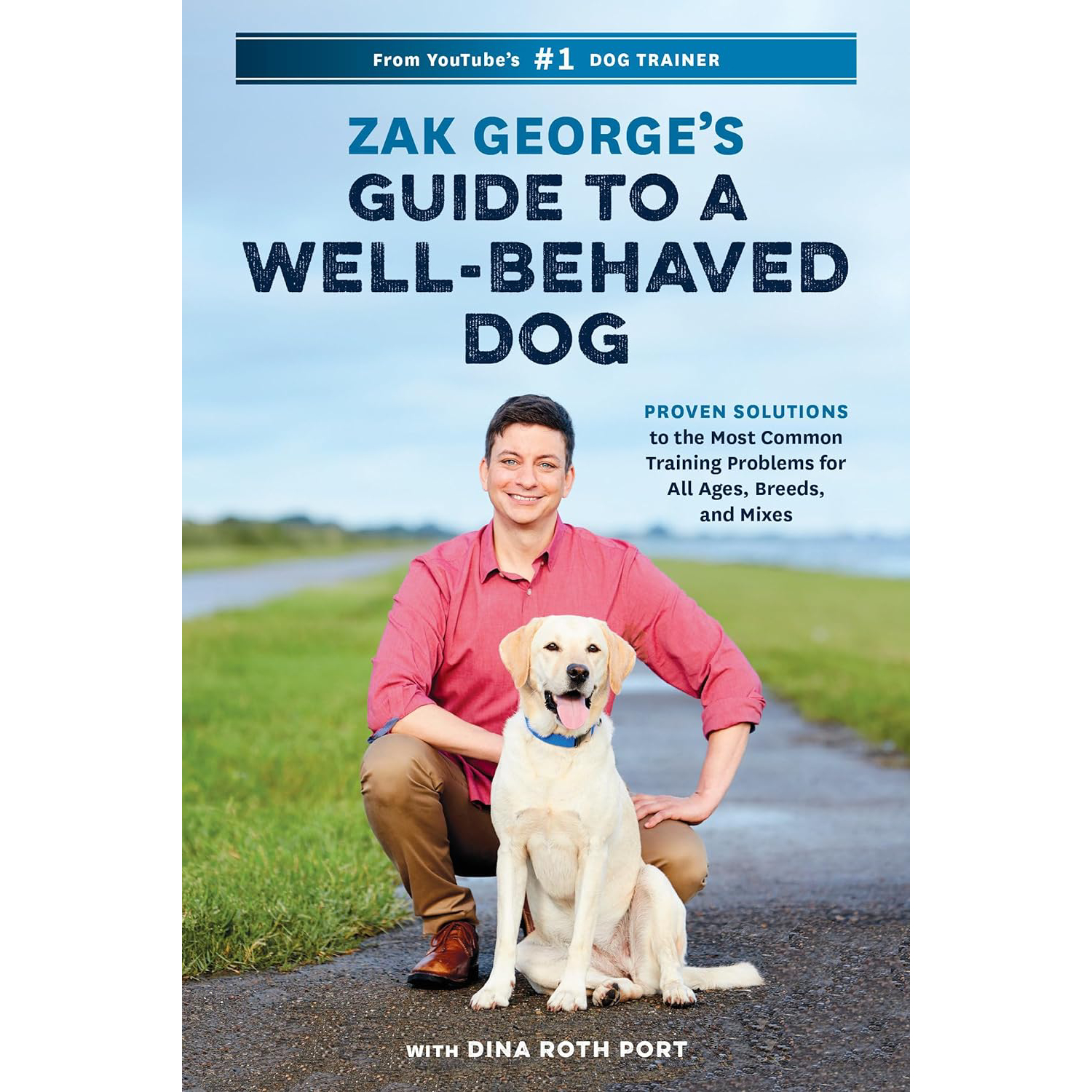
| Format: | Paperback |
| Pages: | 224 |
| Author: | Zak George |
Dogs are always learning which means even if you’re not specifically training your dog, it will be picking up habits and repeating behaviors depending on what it has learned itself. It’s very easy to accidentally teach bad habits and then reinforce them with inappropriate responses, and this isn’t always down to you, as the primary pet parent. It could be others that are reinforcing bad behavior, but it is down to you to resolve the problems.
Zak George’s Guide to a Well-Behaved Dog offers solutions and training techniques to help curb some of those unwanted behaviors. It is aimed at dogs of all ages, but this includes puppies, and it is best to correct unwanted behavior at as young an age as possible. It can help with desensitizing a dog to negative encounters and even a puppy’s mouthing and nipping behavior. It does also cover the basics of training, so you can learn to teach commands like “sit” and “stay”.
Zak George is a popular YouTube dog trainer, and the book reinforces the methods he uses in his videos, which means if you have watched his YouTube channel, you might not find any new information in the pages of the book.
- Uses positive reinforcement techniques
- Can help with unwanted behaviors
- Also teaches the basics of training
- Nothing new if you’ve seen Zak George’s YouTube channel
5. Simple and Effective Puppy and Dog Training for Busy People
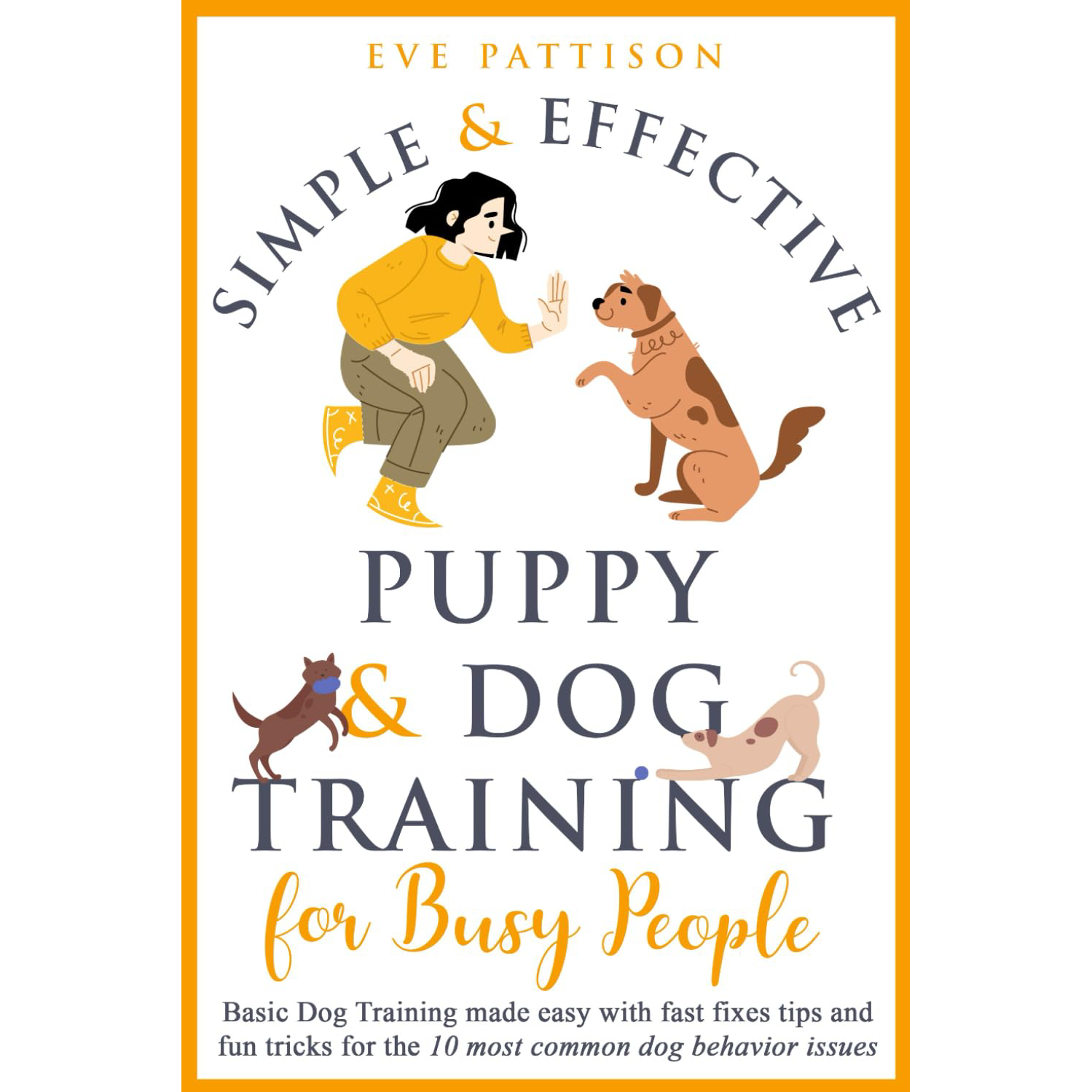
| Format: | Paperback |
| Pages: | 126 |
| Author: | Eve Pattison |
The key to good puppy training is to be the most important and interesting thing in your young dog’s life. That way, when you speak, call their name, or otherwise ask for their attention, you will get it. It is the key to praise-based training, and it makes walks and other activities where distractions are high much easier.
Simple and Effective Puppy and Dog Training for Busy People shows you how to teach basic commands and highlights the importance of socialization. It also teaches vital aspects of good puppy behavior, such as recall, walking to heel, and crate training. There is also a section that includes fixes for some of the most common puppy behaviors.
The book is well-priced, and it does cover a good range of training and behavior topics, although it is quite short with just over 100 pages of content.
- Become the most interesting thing in your puppy’s life
- Teaches basic training techniques
- Troubleshoots problem behaviors
- Reasonably priced
- Quite short
6. Dog Training for Kids
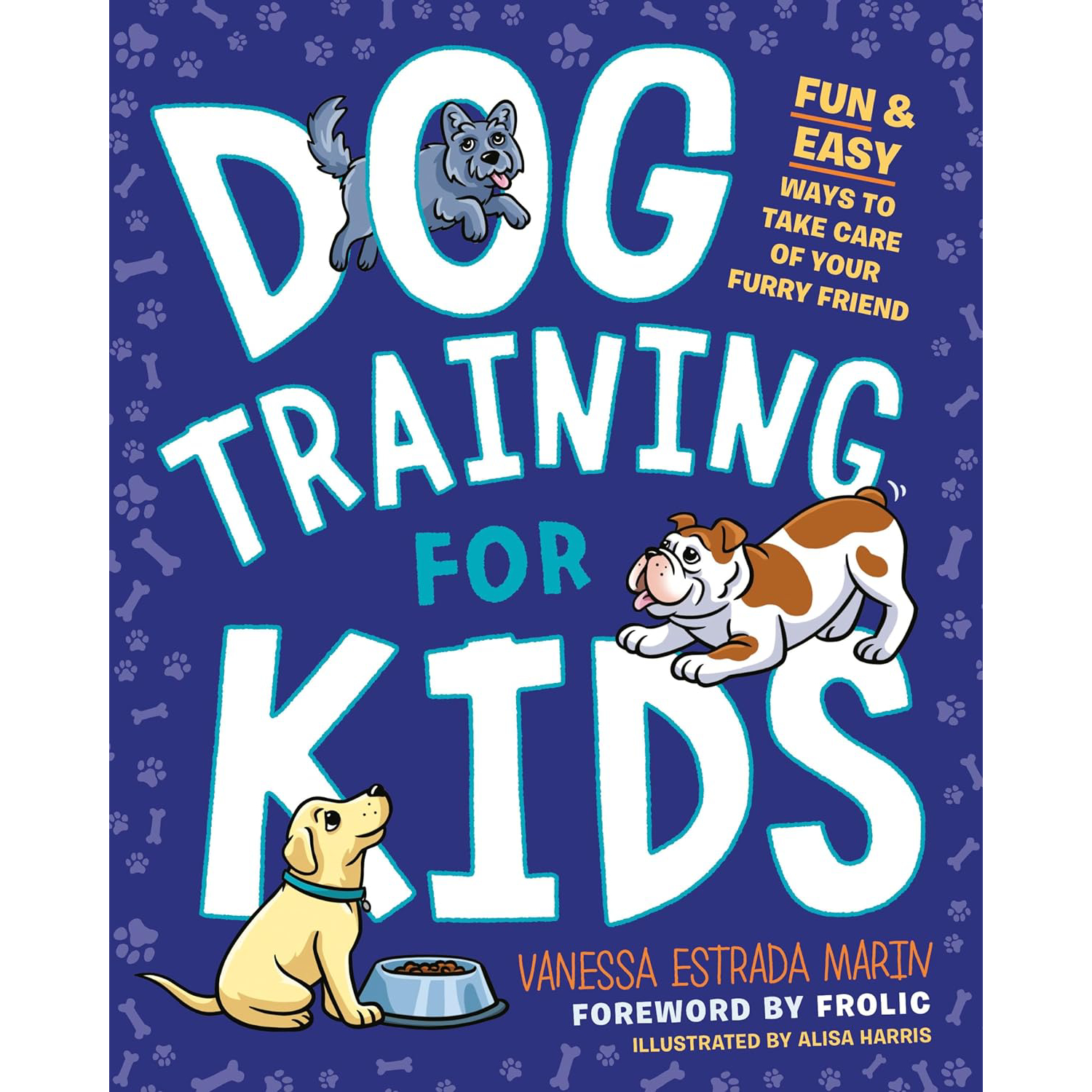
| Format: | Paperback |
| Pages: | 176 |
| Author: | Vanessa Estrada Marin |
Having a child and a puppy grow up together is a great way for them to form a strong bond. It also means your puppy will be more likely to get along with other children and it can set your child up for a lifetime of happy dog ownership. In the same way that it is never too early to start training a puppy, it’s also never too early to teach your children how to train a dog.
While you, or another adult in the home, should be the main trainer, teaching the kids some training techniques not only reinforces your methods but also helps ensure that your son or daughter isn’t training bad behavior or unwanted commands.
Dog Training for Kids: Fun and Easy Ways to Care for Your Furry Friend is a guide to help children have a hand in dog training. It includes guides to stopping barking and other behavior correction, as well as basic commands like sit and stay. This puppy training book also includes games that can help with training and an assortment of tricks that children will enjoy teaching. It is a little more expensive than most other training books on the list and it is quite advanced for the lower end of the 5–10 year old advised age range.
- Get kids involved in the dog training process
- Good variety of tricks and games, as well as training
- Quite advanced for the advised age range
- A little expensive
7. Puppies for Dummies
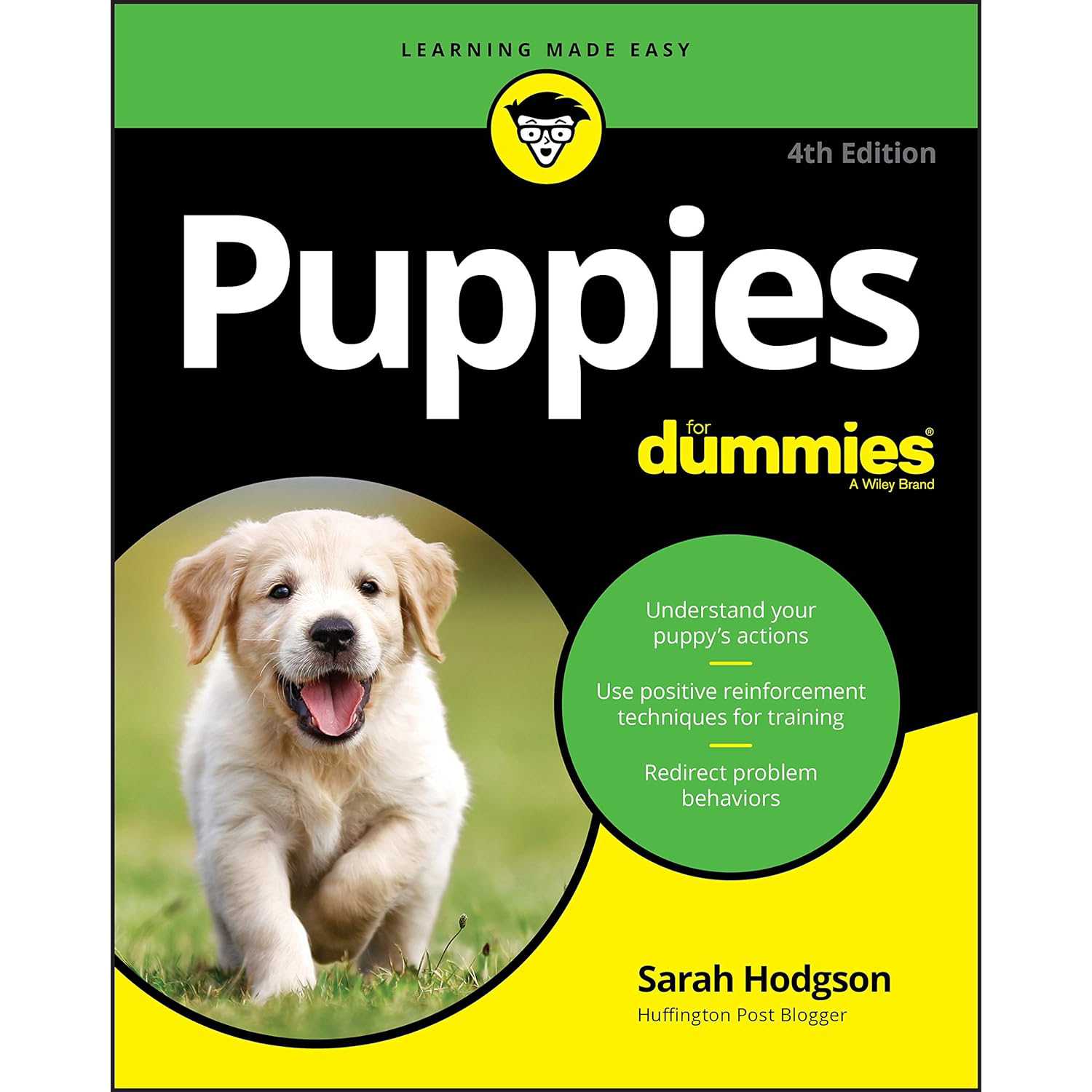
| Format: | Paperback |
| Pages: | 432 |
| Author: | Sarah Hodgson |
The For Dummies book series is well-known for publishing guides and guidebooks on most topics, with more than 300 titles published to date. Puppies For Dummies contains more than 400 pages of content that covers everything about owning a puppy, from choosing a breeder or rescue to case studies on positive reinforcement training.
Training topics included in the book cover walking on a leash, potty training, and what to do about separation anxiety. There is more content based on specific problems and training requirements than in a lot of the other books, and it does benefit from that. However, a lot of the 400 pages of content is taken up with general information, case studies, and other pages that won’t necessarily help on the training journey, and there is a lot of flicking back and forth between chapters.
If you’re looking for something with more general puppy-owning information, Puppies for Dummies is a good choice. If you’re looking to get straight into puppy training techniques, it may be a bit too expansive a book.
- Over 400 pages of puppy-owning content
- Covers the science as well as the techniques
- Includes information specific to problems like separation anxiety
- A lot of the content isn’t related to training
- Navigation through the book can be tricky
8. Puppy Training: How to Housebreak Your Puppy in Just 7 Days!
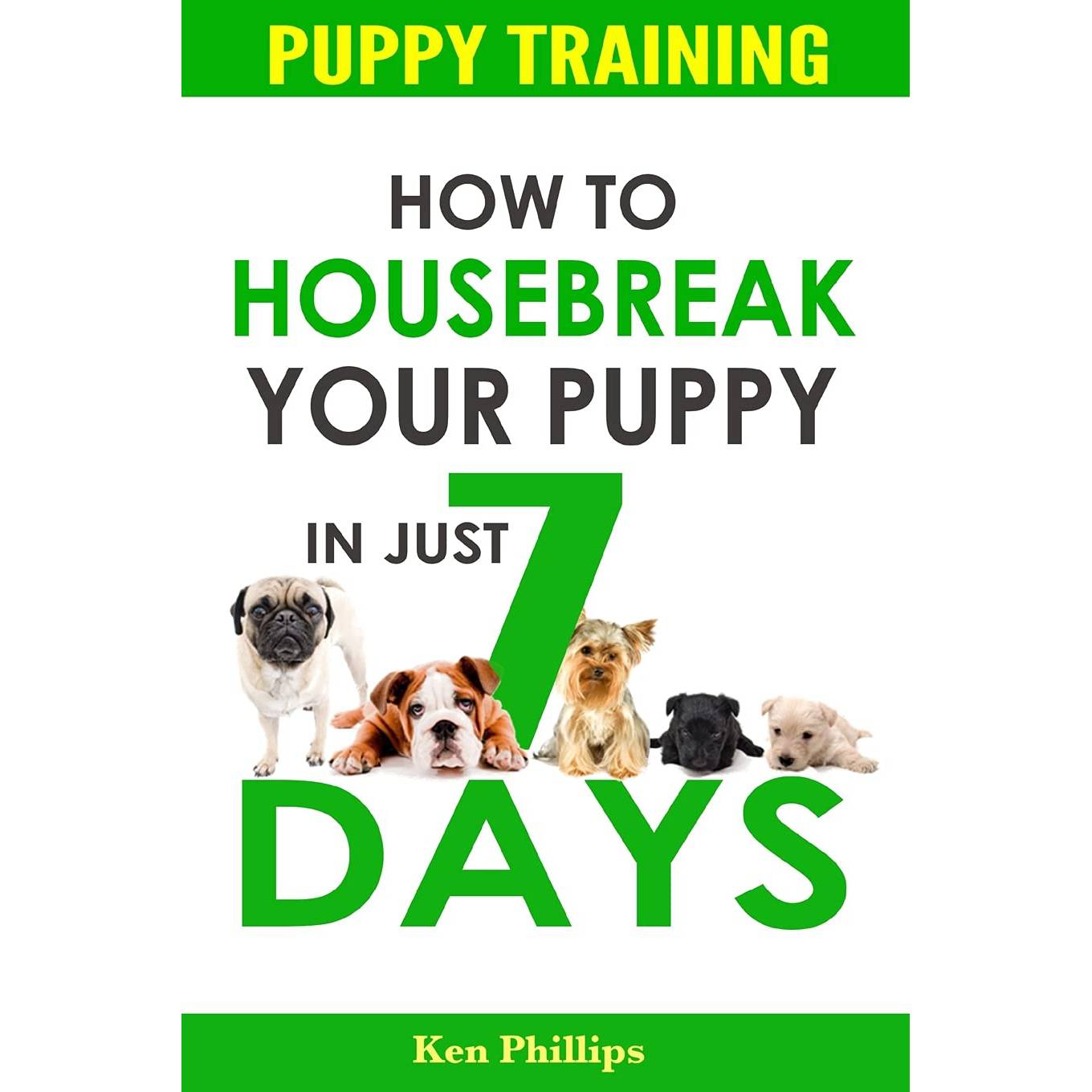
| Format: | Paperback |
| Pages: | 114 |
| Author: | Ken Phillips |
One of the first things most owners want to train their puppies is potty training or house training. Dogs don’t instinctively know they should wee and poop outside and if you don’t quickly work to potty train a dog, going indoors will become a habit that is harder to break. It is usually still possible to train an adult dog to go outside, but it is a lot easier, and there will be a lot less mopping up involved if you work on housebreaking first.
Puppy Training: How to Housebreak Your Puppy in Just 7 Days! is a guide to help you do that, and the book claims that owners can train their puppies in just a week. Some of the basic techniques will be especially useful to novice owners. It also discourages old-school techniques like rubbing your dog’s nose in any inside accidents and it highlights the pitfalls of incorrect training.
The book is quite short and repeats itself, and the information is quite basic. Also, while some owners might manage to train their puppies in 7 days, it’s unrealistic to expect the same results from all dogs and all owners.
- Can help housebreak a puppy
- Uses positive training techniques
- Good background information
- A bit basic
- Unrealistic expectations for some dogs and owners
9. Easy Dog Training: Everything You Need to Know to Raise a Happy Pet
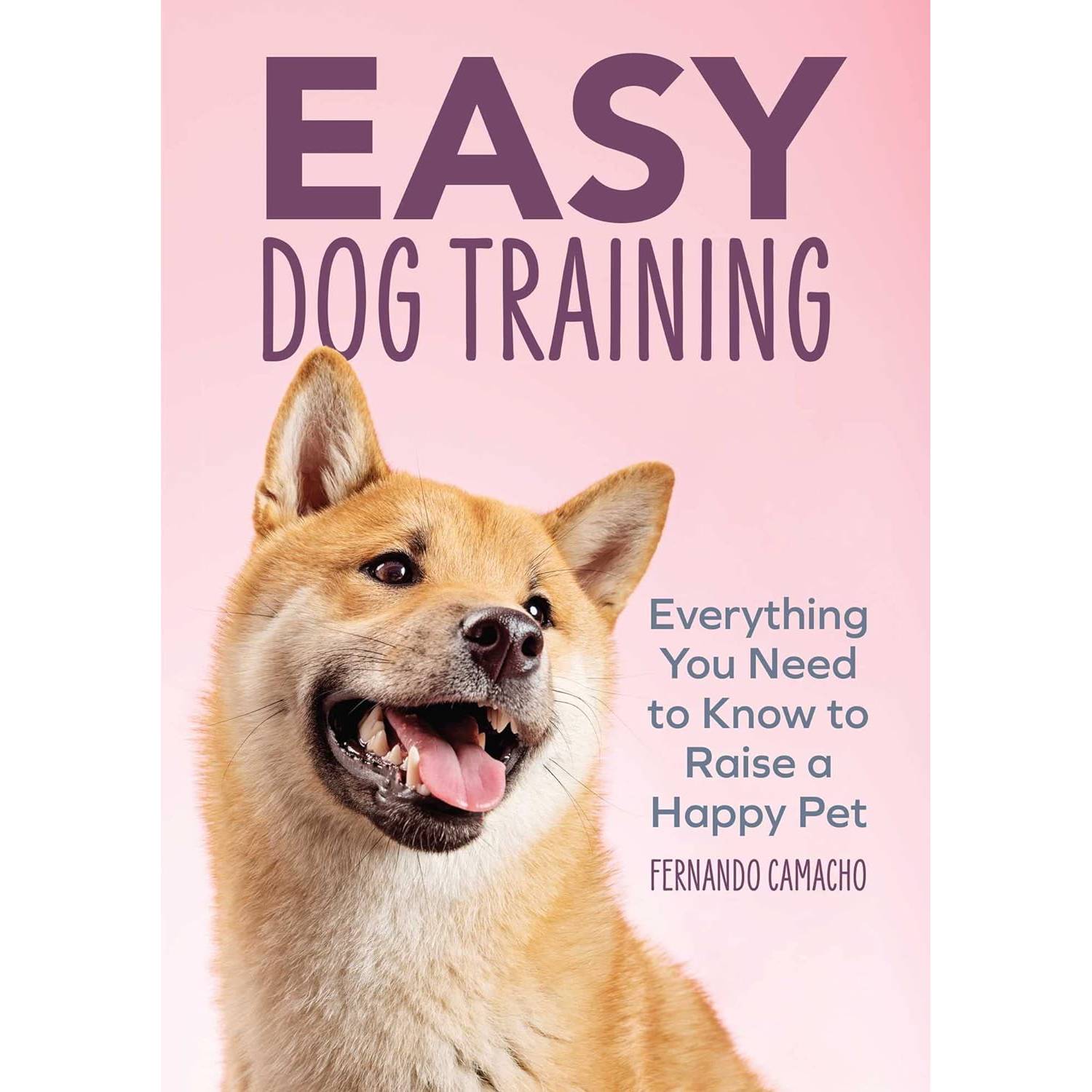
| Format: | Paperback |
| Pages: | 162 |
| Author: | Fernando Camacho |
As well as training, all puppies need socialization from a young age. Socialization introduces puppies to new people, other dogs, and new situations. It teaches them new things aren’t to be feared, which means they are less likely to react when they have to go to the vet or even when they are passing people or other pets while on their walk.
As well as offering a guide to basic training techniques, Easy Dog Training: Everything You Need to Know to Raise a Happy Pet includes information on socialization techniques and offers advice on overcoming unwanted and potentially antisocial behavior in your puppy.
The training only makes up quite a small section of the 160 pages of the book, with the rest looking at things like securing your yard ready for your new dog, so while it is a helpful guide for new first-time owners, the information is a little basic and not all relevant to the training journey.
- Contains solid background and basic information on puppy ownership
- Doesn’t overlook the importance of socialization
- Good for first-time owners
- Basic information
- Only a portion of the book concentrates on training
10. How to Raise the Perfect Dog: Through Puppyhood and Beyond
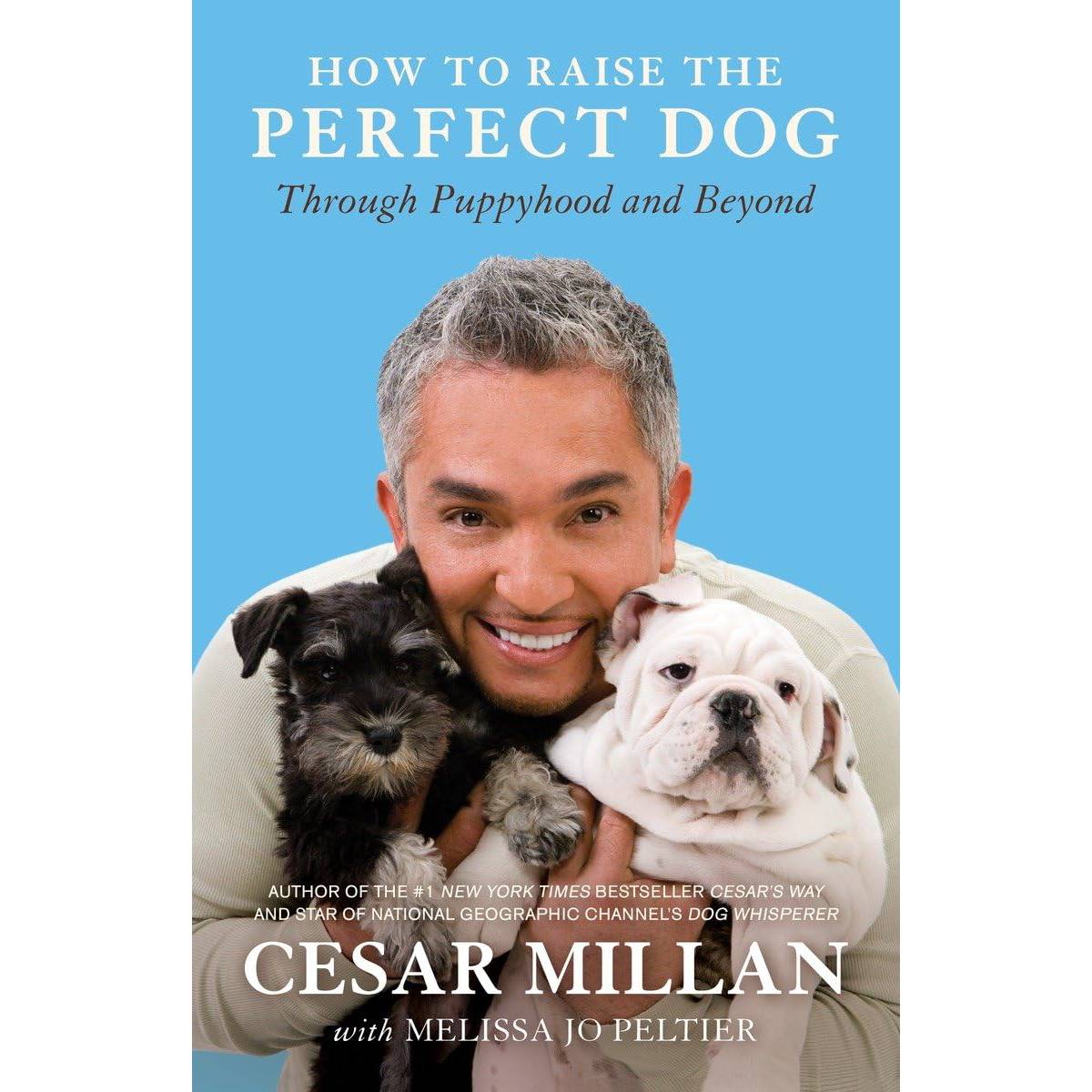
| Format: | Paperback |
| Pages: | 320 |
| Author: | Cesar Millan |
Most people know Cesar Millan through his National Geographic Channel series The Dog Whisperer, in which he worked with some incredibly difficult dogs and made them model pups.
How to Raise the Perfect Dog: Through Puppyhood and Beyond is the latest in Millan’s series of dog-training books that bring his techniques to dog owners. The book concentrates more on how to act around and with your dog rather than providing specific training examples, but this does form the basis of your relationship and is the foundation for effective training methods. Although the book is quite long, it is written so that it is easy to digest and can be read cover-to-cover in a day or two.
Good puppy training needs to become a habit for both of you, and How to Raise the Perfect Dog does a good job of instilling good habits in you and your puppy, but it would benefit from having more specific training tips and techniques included within its pages. Not everybody is a fan of Cesar Millan’s training techniques, but if you’ve watched his series and want to emulate his techniques, this is a good book for that.
- Encourages positive habits from your puppy and you
- Over 300 pages
- Easy to read
- Would benefit from more training techniques
- Cesar Millan’s training techniques aren’t popular with everybody

Buyer’s Guide: Choosing the Best Puppy Training Books
Training is an important stage in puppy development. It doesn’t just mean teaching basic commands like “sit” and “stay”, it typically starts with house training or potty training and will go on to include leash training and, in a lot of cases, crate training.
Even if you’ve owned multiple dogs in the past, it is a good idea to brush up on your training skills, and having a puppy training book by your side gives you a point of reference you can refer back to whenever you need it while also giving you a good understanding of the requirements.
If you are worried about your dogs behavior, we suggest speaking to a vet
If you need to speak with a vet but can't get to one, head over to PangoVet. It's our online service where you can talk to a vet online and get the advice you need for your pet — all at an affordable price!

Training Type
There are different schools of dog and puppy training. Most modern trainers use positive reinforcement, and as such, most training books encourage the use of these methods. The main training methodologies are:
- Positive Reinforcement– In positive reinforcement, you use positive stimuli to reward and reinforce positive behavior. Most puppy training will be centered on this type of training.
- Negative Punishment– Negative punishment means removing something your dog likes when they do something you want to discourage. One of the most common uses of negative punishment is to ignore your dog and turn away when it nips at your hand. The punishment, in this instance, is the removal of your attention. Negative, in this case, means the removal or taking away of something, and negative punishment does not mean physical punishment.
- Positive Punishment– Positive punishment means adding some stimuli when your dog does something you want to discourage. For example, clicking loudly when your dog jumps up at you might be considered a form of positive punishment.
- Negative Reinforcement– Negative reinforcement means taking something unpleasant away when your dog performs a desired action. Shock collars utilize this kind of training because the shock stops when a dog behaves in a desired way. This is not generally considered a good training method for dogs. The dog doesn’t really understand why it is being shocked and it can lead to a fearful and even reactive dog.
Tools
It is possible to train a dog without any tools other than those you possess personally. This is especially true if your dog is motivated by praise and enjoys being lavished with love. However, training can be a lot more effective if you use healthy treats as rewards or if you offer a toy to your dog as a distraction when it is chewing something you don’t like. Some trainers advise the use of a clicker, too. And if you’re training tricks, you will benefit from having apparatus for your dog to use.
How We Selected These Puppy Training Books
This buyer’s guide was carefully crafted by our writers and editors in collaboration with our team of in-house veterinarians. The puppy training books reviewed here are rated on a combination of factors: brand reputation, customer reviews across multiple retail outlets, personal experience, and in some cases, feedback from our own dogs! Together, we choose and review only the best puppy training books available, to help you make the most informed decisions that foster the well-being of your furry friends.
Why Trust Dogster?
Dogster has been a trusted brand for dog owners online since 2004, which means we have a lot of experience with puppy training books. We are a team of passionate dog owners who care about our pups as much as you do yours. We want the best for every canine on the planet. Dogster’s writers, editors, and veterinarians are deeply invested in the well-being of our pets, and we believe that all pet owners share this dedication to providing only the highest quality products and services for our dogs.

The 5 Puppy Training Tips
Training a puppy does mean setting aside some time every day to practice, and it also means utilizing training techniques throughout the day, every day. Successful training not only means you can have your dog sit and stay on command, but it encourages positive behavior and discourages negative behavior.
Below are five tips to help ensure more successful puppy training.
1. Start As Soon As Possible
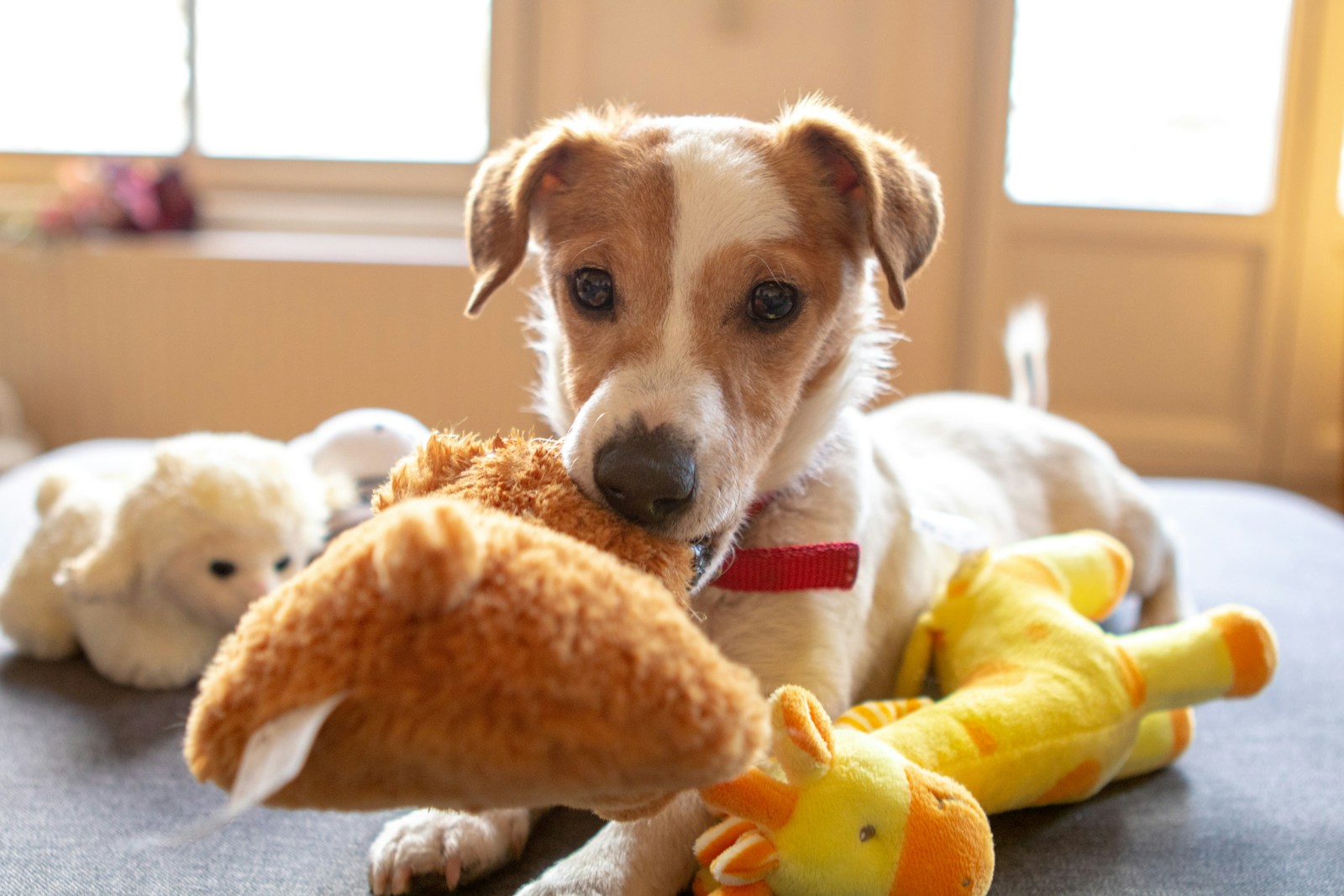
The ideal time to start training your new puppy is a day or so after getting them back to your home, regardless of their age. Most puppies don’t join their new families until they are at least 8 weeks of age and, more typically, when they are 12 weeks of age. Even if your puppy is older, now is the time to start training.
2. Practice Without Your Puppy
When you’ve bought a puppy training book, read through it before you start training. You can also practice some of the training techniques provided without your puppy present. This enables you to perfect the commands, the movements, and other elements of the training so you don’t get it wrong and confuse your young puppy.
3. Start with a Marker

A marker is a word or phrase that you use when your dog does something good. “Good boy,” good girl,” or just “good” are some examples. You should consistently use the same marker, and you don’t just have to use it when your dog obeys a command. Whenever your puppy is doing something you want to encourage, use the marker and consider giving a reward.
4. Determine Your Puppy’s Biggest Motivator
When it comes to rewards, it is important to note that all dogs are different. Some will do anything for verbal praise and a head scratch. Others will obey commands if it means they can get hold of their favorite toy. Many dogs will respond to tasty food-based treats. Work out your dog’s favorite reward.
5. Don’t Push It

Puppies are malleable in terms of behavior, but they are also young. Physical exercise and mental stimulation will both tire a puppy out, so you don’t want to start training when they are tired, and you shouldn’t make training sessions too long. Start training 5 minutes a day, and increase this gradually to 10 minutes and then to a quarter of an hour a day.
When Should You Start Training Your Puppy?
You should start training your puppy as soon as possible. You can start from a few weeks old, although most puppies join their new families at around 10 weeks.
Can Any Puppy Be Trained?
Any puppy can be trained, although different puppies respond to different stimuli, different commands, and different praise and rewards. Some will pick new commands up more quickly than others, and some will have stubborn or independent streaks that can make training a real challenge.

Conclusion
Taking on a puppy is a challenge. Training it to be well-behaved, listen to commands, and pay attention to you will improve your relationship and ensure a well-adjusted dog in your home. Whether you’re an experienced dog owner or a first-timer, puppy training books can help you on the path to a perfect pup, and above, we have included reviews of the best puppy training books to help.
We found Training the Best Dog Ever to be the best overall, thanks to its structured plan and a good amount of content. Puppy Training in 7 Easy Steps is an inexpensive alternative that has checklists and guides, although the information is a little basic.
Featured Image Credit: Marvin Meyer, Unsplash









